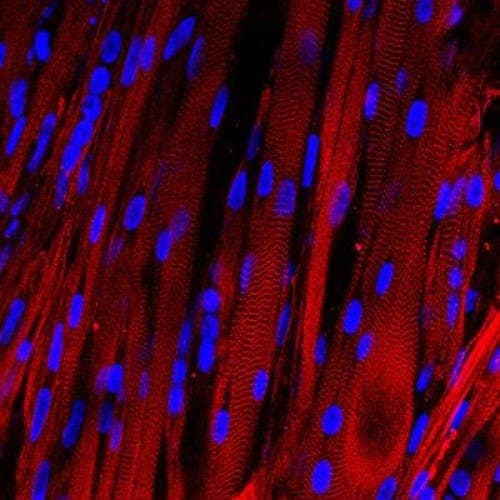For the first time, scientists have created a human muscle in a lab which can contract responds to external stimuli just like a real muscle. The engineered muscle responds to electrical pulses, biochemical signals and pharmaceuticals. The development will allow researchers to test the effect of drugs on human muscles without needing human subjects and in time, may lead to the creation of artificial muscles.
“The beauty of this work is that it can serve as a test bed for clinical trials in a dish,” said Bursac. “We are working to test drugs’ efficacy and safety without jeopardizing a patient’s health and also to reproduce the functional and biochemical signals of diseases — especially rare ones and those that make taking muscle biopsies difficult.”
Scientists have created animal contracting muscles in the lab before, but working with human cells is a bit more difficult. In order to create the muscle, they developed a small sample of human cells that had already progressed beyond stem cells but did not become muscle cells. They then expanded these cells 1000 fold, and placed them on a 3D scaffolding with some nourishing gel, and the human muscle developed.
“We have a lot of experience making bioartifical muscles from animal cells in the laboratory, and it still took us a year of adjusting variables like cell and gel density and optimizing the culture matrix and media to make this work with human muscle cells,” said Madden.
Naturally, they subjected the result to a huge number of tests to see if it works out just like a human muscle, and everything turned out alright. The response to stimuli was similar to that of real muscle, and even the response to drugs was similar.
“One of our goals is to use this method to provide personalized medicine to patients,” said Bursac. “We can take a biopsy from each patient, grow many new muscles to use as test samples and experiment to see which drugs would work best for each person.”
Journal Reference:
- Lauran Madden, Mark Juhas, William E Kraus, George A Truskey, Nenad Bursac.Bioengineered human myobundles mimic clinical responses of skeletal muscle to drugs. eLife, 2015; 4 DOI: 10.7554/eLife.04885










